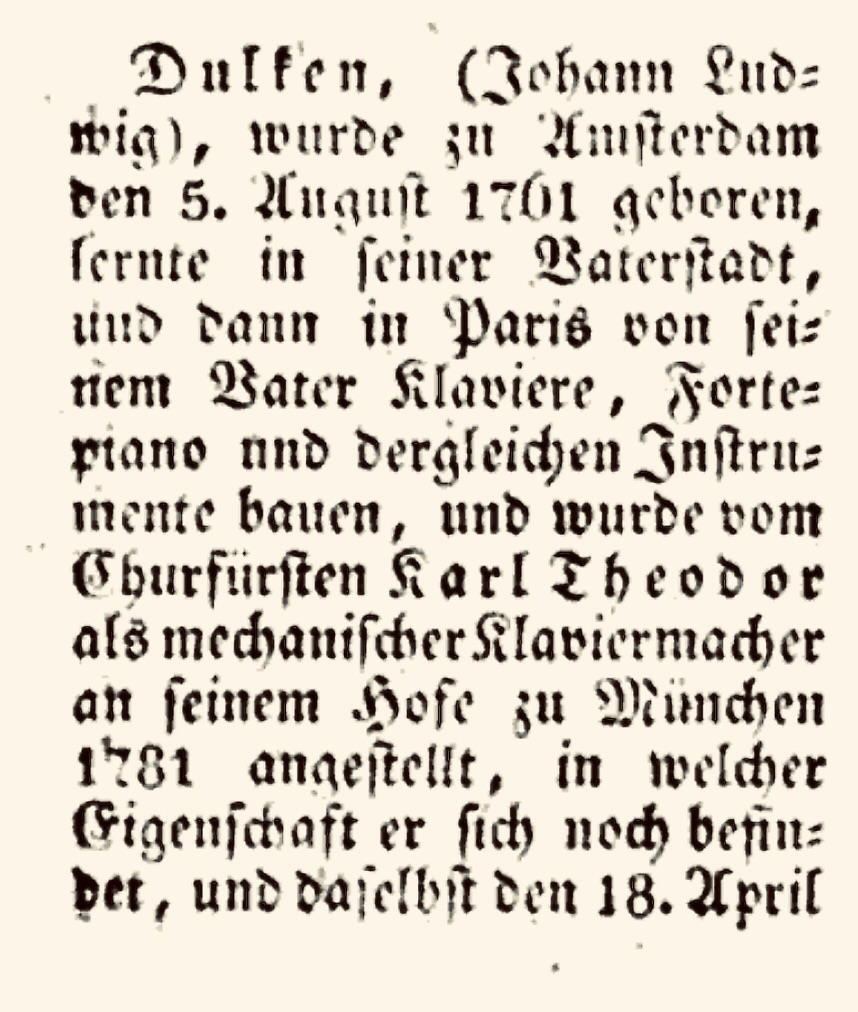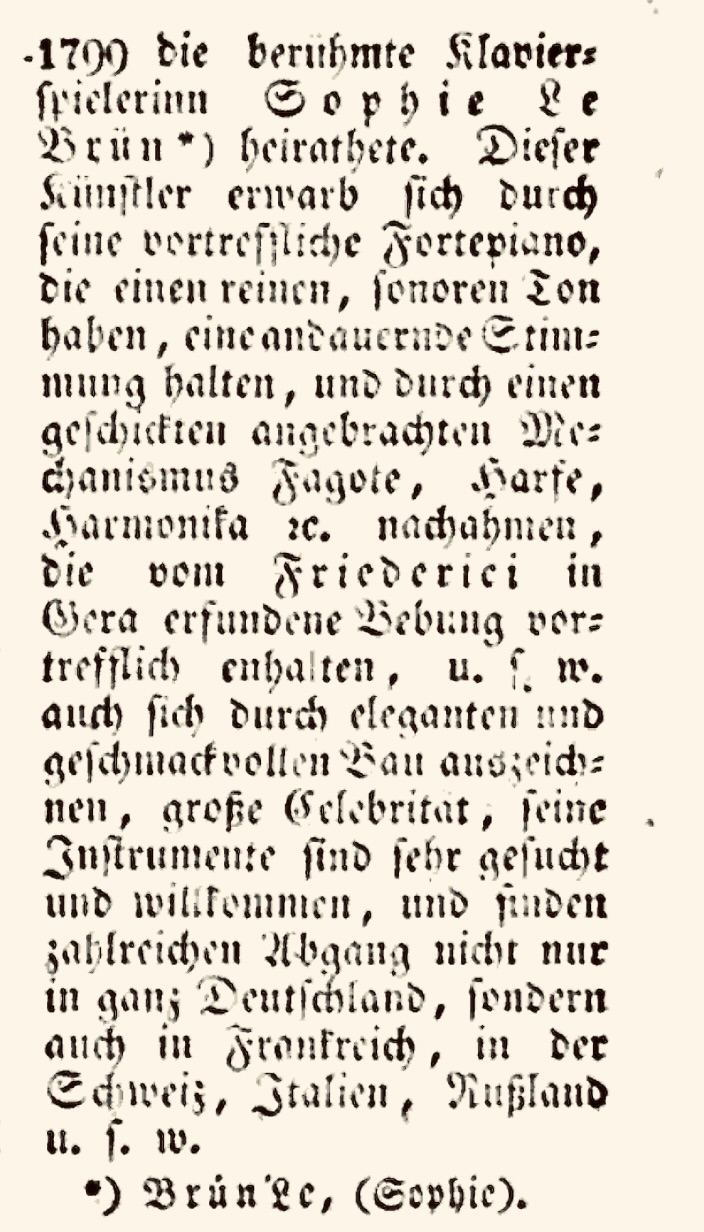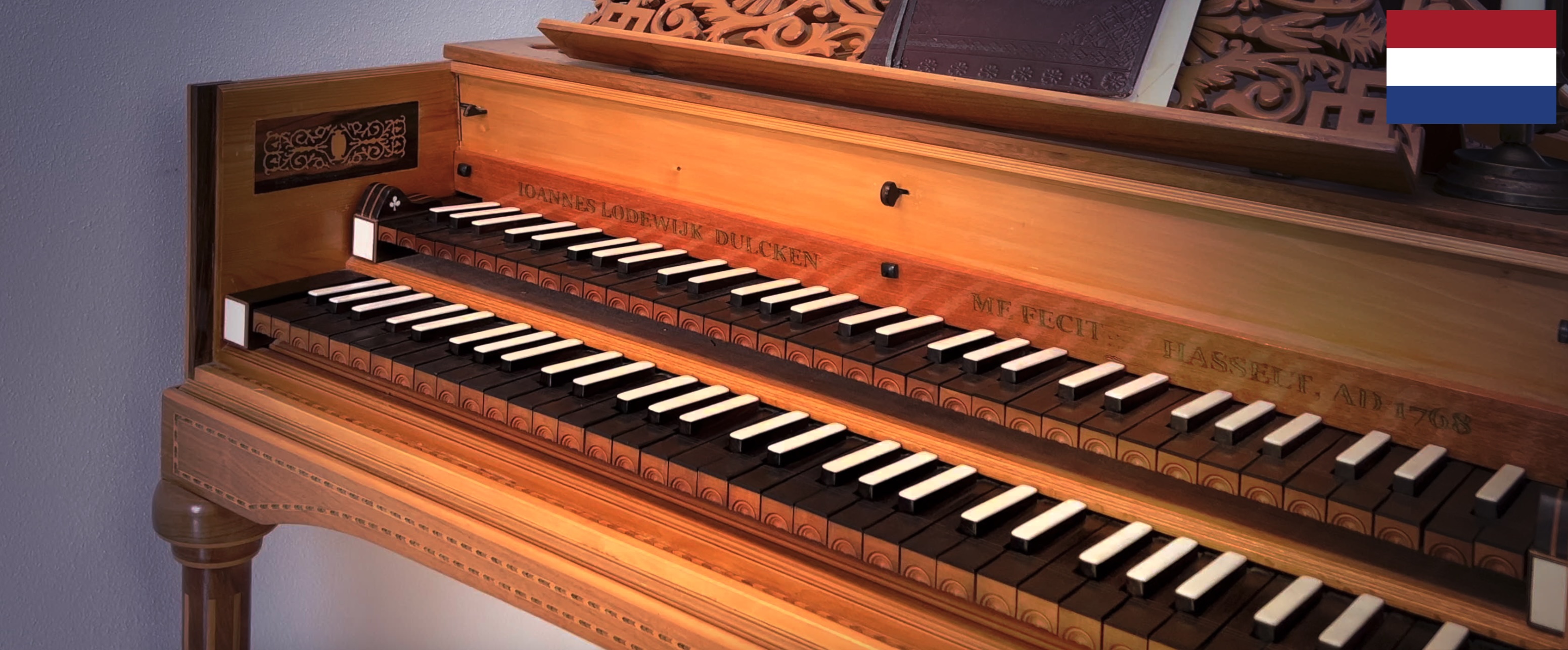Johannes Lodewijk Dulcken jr
Munich
Johannes Lodewijk received his education from his father in Hasselt. When his parents move to Antwerp in 1776, he joins them. He spent the first 15 years of his life in the small town of Hasselt; now he went to the great city of Antwerp.
In Antwerp, he probably started working immediately in his father's workshop, which constantly improved his new invention. The revamped harpsichord was given the name pianoforte. How long they worked together in Antwerp is not exactly known; probably only two years. Sometime between 1777 and 1780, his father moved to Paris, where he set up another workshop.
Probably the Dulckens, father and son were very successful. Even so successful that this is noticed by Karl Theodor von der Pfalz, the Elector of Bavaria. This Karl Theodor was an important man at the time and governed a large territory in Germany. He was also in possession of the Land of Ravenstein and the Marquisate of Bergen op Zoom, and he is Duke of Gulik and Berg. So he has quite a few connections in the Netherlands. Charles Theodore is a great music lover and plays an instrument (flute) himself. He asks Johannes Lodewijk jr. to accompany him to Munich in 1779. He was only 18 at the time. So young and already recognised as a genius harpsichord maker.
Much is known about his life and work in Munich. Several articles have been written about it. Therefore, some outlines now.
In Munich in 1779, Louis entered the service of royal piano builder Johann Peter Milchmeyer, working at the court of Elector Karl Theodor, as an assistant. In his workshop, Johann Peter's responsibilities include carefully preserving, improving and renewing all the grand pianos belonging to the palace. In June 1782, Dulcken takes over Milchmeyer's office and becomes city piano maker at the age of 21. He is a true craftsman. He makes special instruments for the court and sells one pianoforte after another, not only in Munich and Bavaria, but also far beyond. In Munich, he is addressed in different ways: Johann Ludwig, Jean Louis but often just Louis.
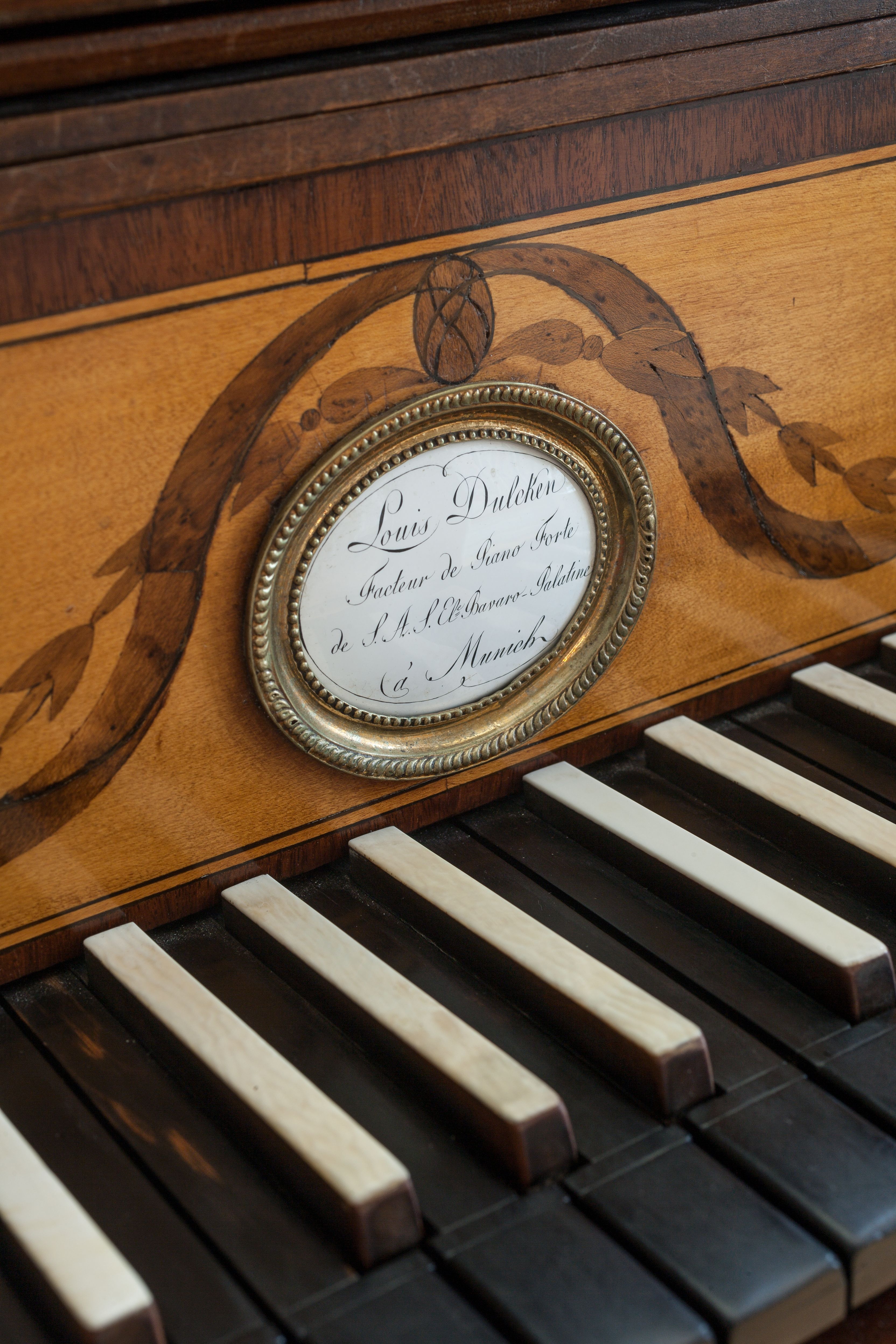
Kurpfälzisches Museum Heidelberg
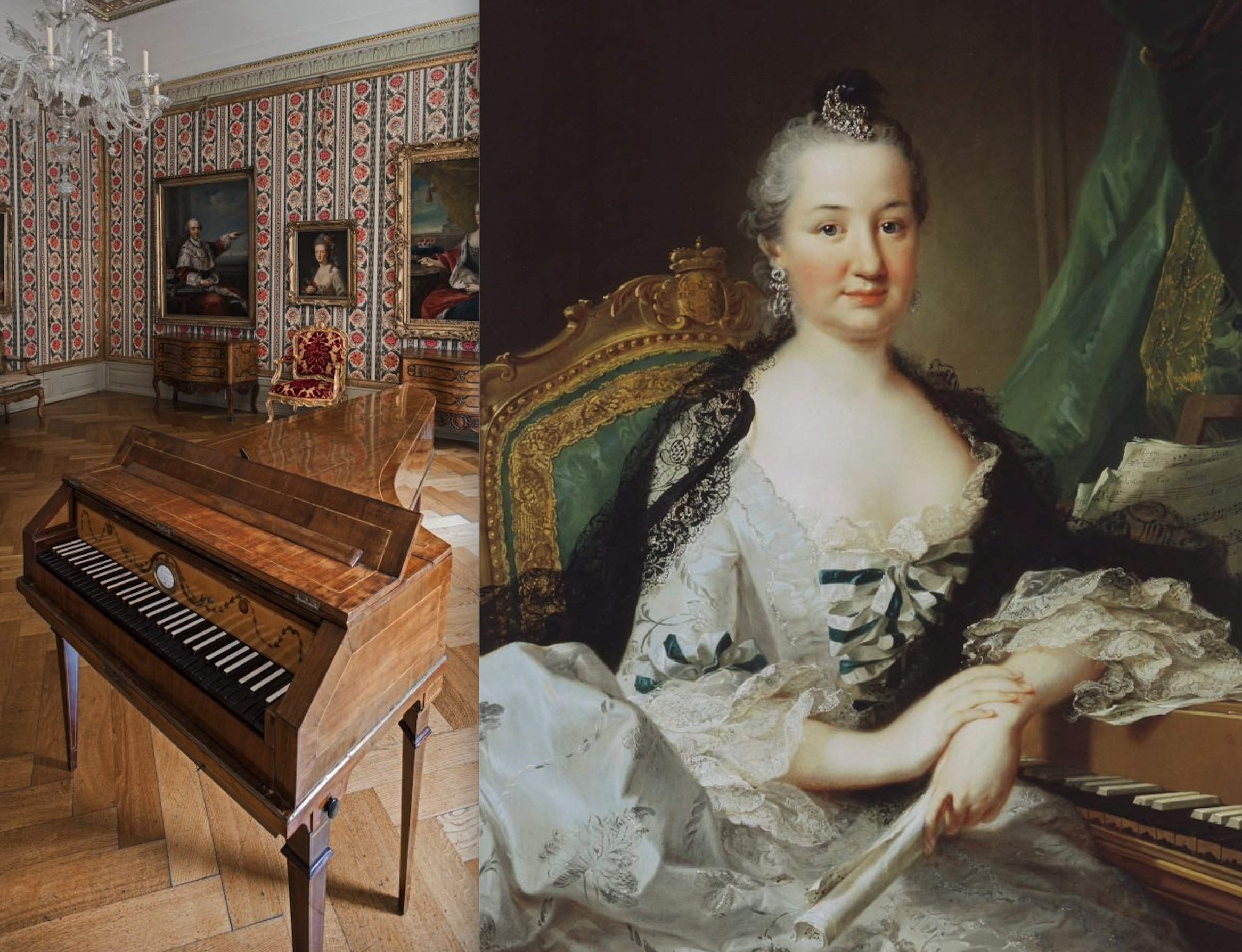
Kurfüstin Elisabeth Auguste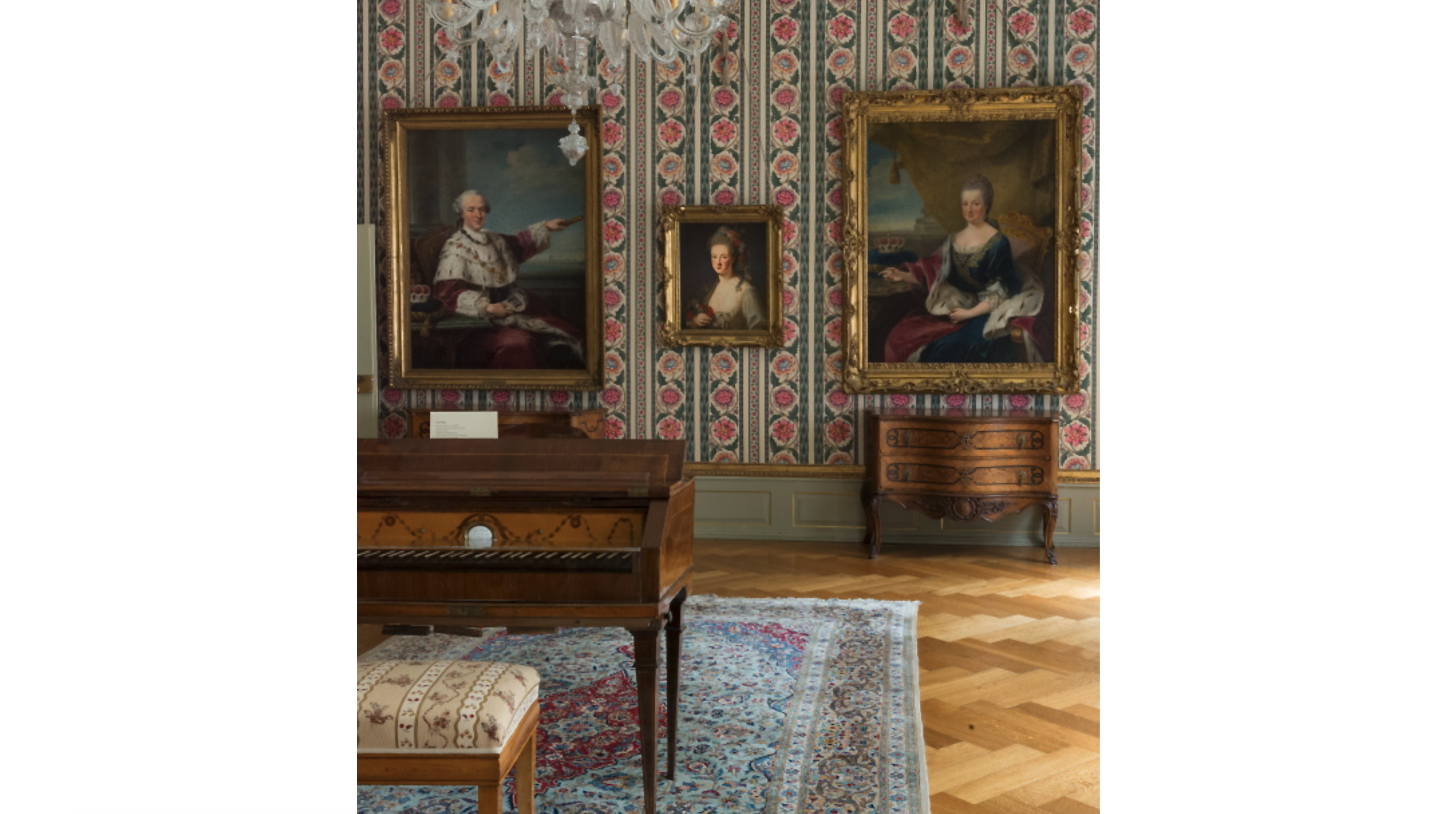
Keurvorstenpaar (links en rechts) en het klavier van Louis Dulcken II
Marriage
In 1799, Louis Dulcken married Sophie Lebrun and thus became part of a very musical family. His wife Sophie is the daughter of the Baden virtuoso oboist and composer Ludwig August Lebrun and of the Baden soprano and composer Franziska Danzi. Sophia is an exceptionally good pianist and composes musical pieces herself. She performs in Paris, Switzerland and Italy.
Louis Dulcken and his wife Sophie have seven children, two sons and five daughters, almost all of whom make careers as well-known musicians. By marriage to Sophie Lebrun, Louis Dulcken's house ‘for a long time forms the most interesting meeting place of the then well-educated music world in Munich’. Musicians and composers visit.
Dulcken is also doing well financially. He makes a lot of money with his unique pianofortes. Royal houses all over Europe buy his instruments. Empress Josephine of France buys two of his instruments during her visit to Munich in 1805/06 and shortly afterwards she orders a third, which they are so pleased with in Paris that it is exhibited there for a long time. In 1816, a grand piano is delivered to the Austrian Empress Carolina Augusta, a daughter of Bavarian King Maximilian I Joseph. An instrument also goes to St Petersburg.
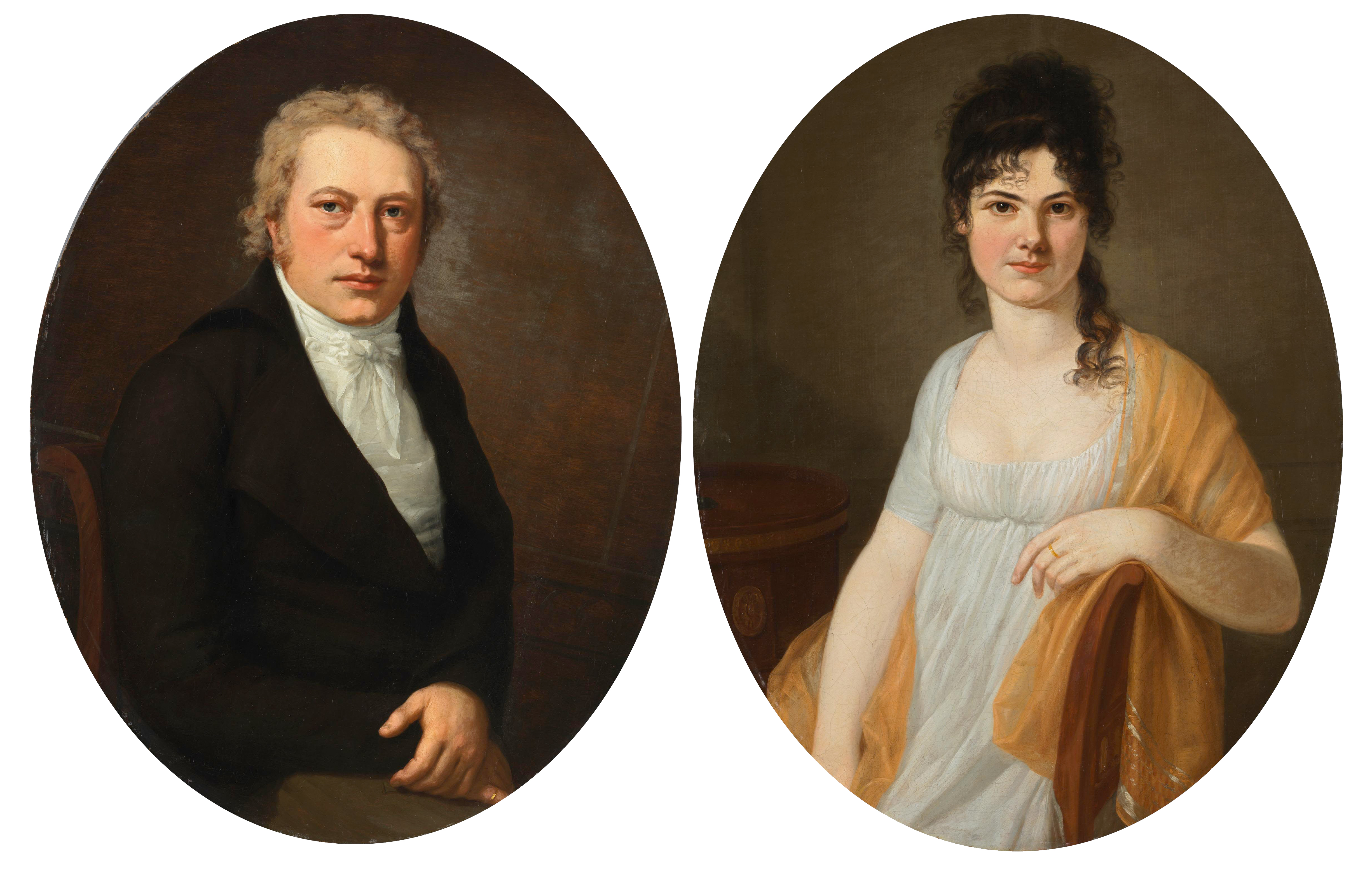
Louis & Sophie Dulcken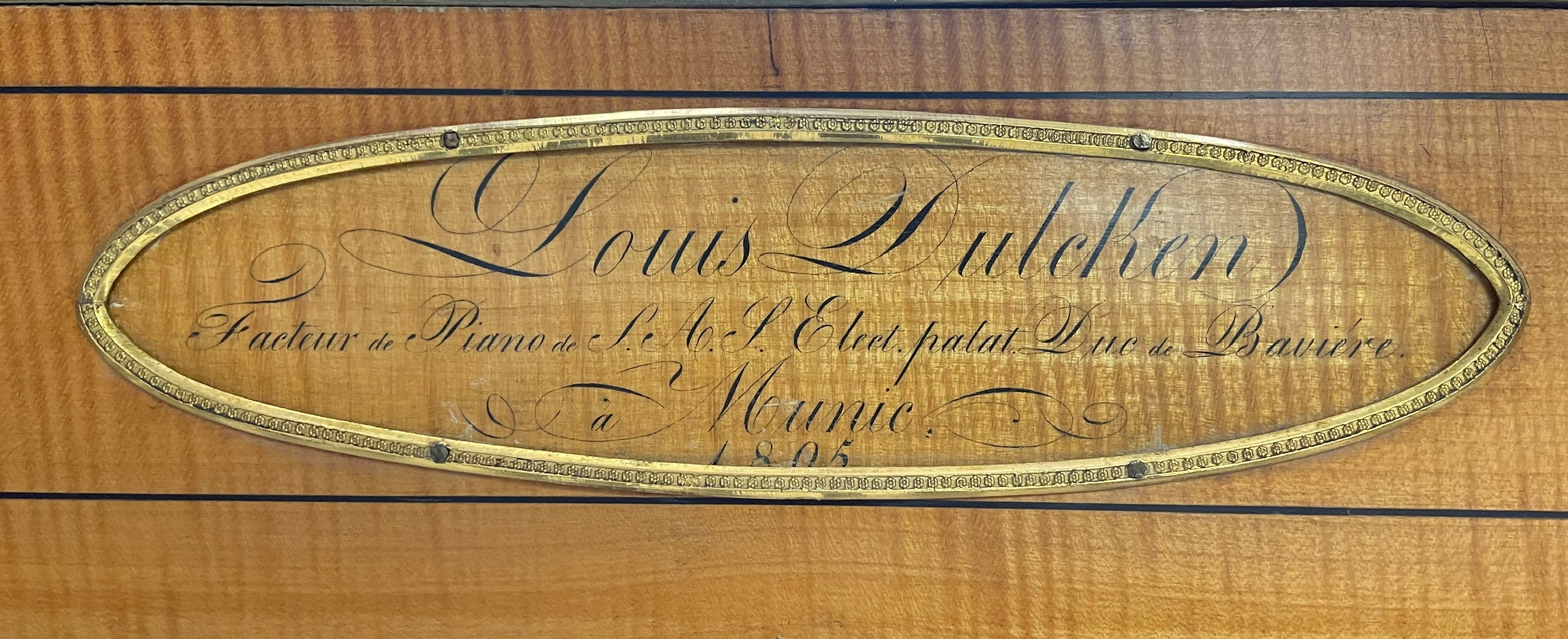
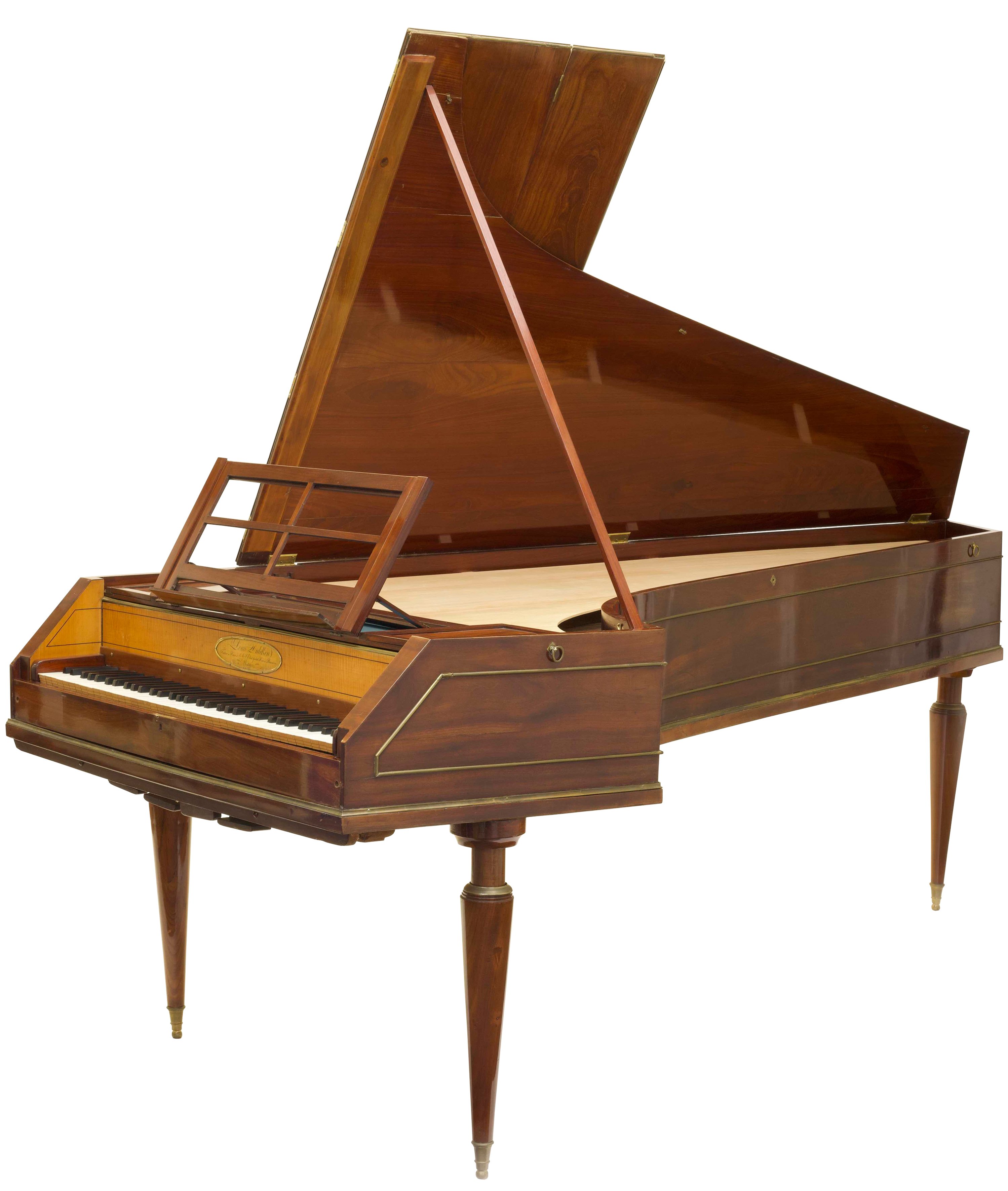
Greifenberger Institut für Musikinstrumentenkunde
His work
Dulcken has developed in his long career by constantly trying new improvements. His work shows that he has been influenced by various movements.
From his father and grandfather, he learned how to make the construction of instruments optimal. His way of fixing the soundboard is typically something he brought from home. The gluing of the walls of the sound box to the bottom where the walls are first glued before starting the further construction of the fortepiano is also something he brought with him from Hasselt/ Antwerp. His father and grandfather's influence can be recognised in the choice of thickness of the various parts.
He was also influenced by Augsburg piano builder Andreas Stein and by other South German instrument builders.
Music experts tell us that Louis Dulcken is considered the most successful piano builder in Munich during his lifetime. He is praised, for example, for the quality characteristics of his instruments. They have ‘a pure sonorous tone’, keep ‘a permanent tuning’ and can mimic bassoon, harp, harmonica etc by means of a cleverly applied mechanism'. They are characterised by ‘elegant and tasteful construction’, making his instruments highly respected and welcome. In short Dulcken is genius in his method of construction. He knows how to bring out sounds from his instruments that thrill listeners.
His pianos won awards. In both 1819 and 1820, he received a medal at a major exhibition in Munich for his outstanding fortepianos.
Father Johannes Lodewijk Sr was still able to witness his son's success. He kept in touch with him from Paris and at the end of his life he also moved to Munich, where he died between 1793 and 1795.
In 1828, Louis stops working as a court piano maker. He dies in 1836; his wife Sophie in 1863.
"Dulken, (Johann Ludwig), wurde zu Amsterdam den 5. August 1761 geboren, lernte in seiner Vaterstadt, und dann in Paris von seinem Vater Klaviere, Fortepiano und dergleichen Instrumente bauen, und wurde vom Churfürsten Karl Theodor als mechanischer Klaviermacher an seinem Hofe zu München 1781 angestellt, in welcher Eigenschaft er sich noch befindet, und daselbst den 18. April 1799 die berühmte Klavierspielerinn Sophie Le Brün heirathete. Dieser Künstler erwarb sich durch seine vortreffliche Fortepiano, die einen reinen, sonoren Ton haben, eine andauernde Stimmung halten, und durch einen geschickten angebrachten Mechanismus Fagote, Harfe, Harmonika etc. nachahmen, die vom Friederici in Gera erfundene Bebung vortrefflich enhalten, u. s. w. auch sich durch eleganten und geschmackvollen Bau auszeichnen, große Celebrität, seine Instrumente sind sehr gesucht und willkommen, und finden zahlreichen Abgang nicht nur in ganz Deutschland, sondern auch in Frankreich, in der Schweiz, Italien, Rußland u. s. w." Baierisches Musik-Lexikon, 1811, p. 70
"Dulken, (Johann Ludwig), was born in Amsterdam on 5 August 1761, learned to build pianos, fortepianos and similar instruments from his father in his home town and then in Paris, and was employed by Prince Karl Theodor as a mechanical piano maker at his court in Munich in 1781, in which capacity he is still employed, where he married the famous piano player Sophie Le Brün on 18 April 1799. This artist made a name for himself with his excellent fortepianos, which have a pure, sonorous tone, keep a constant tuning, and imitate the fagote, harp, harmonica, etc. by means of a skilfully installed mechanism, excellently incorporate the tremolo invented by Friederici in Gera, and so on. etc., and are also characterised by their elegant and tasteful construction, are very popular, his instruments are much sought after and welcome, and are in great demand not only throughout Germany, but also in France, Switzerland, Italy, Russia, etc." Baierisches Musik-Lexikon, 1811, p. 70
The legacy of the Dulcken family
Around 1780, the rise of the fortepiano caused interest in the harpsichord to disappear. In fact, after 1800, many harpsichords were thrown in the rubbish or literally set on fire. Nevertheless, harpsichords have survived and are now on display in various museums.
About 15 harpsichords by Johannes Daniël Dulcken have survived but none are known by Johannes Lodewijk Dulcken (1735-1793).
By Johannes Lodewijk Dulcken (1761-1835) another 25-30 instruments are known, both harpsichords and pianofortes. They are in museums and in private hands. The earliest known fortepiano was built in the late 1780s and is in the Smithsonian Institution in Washington. The youngest instruments date from the post-1830s.
Around 1980, interest in classical harpsichords increases again. People tried to precisely recreate an original Dulcken in order to produce the same tones and sounds. Since then, many harpsichords have appeared on the market that are copies of one of the Dulcken harpsichords. Advertisements also announce concerts using a (copy) Dulcken.


On 30 April 2024, at Collection Overijssel, a document in inv. no. NL-ZICO 0058.2. File 475 opened on which four wax seals were attached.
VIDEO
What is the story behind this?
1791 Louis Dulcken Fortepiano National Music Centre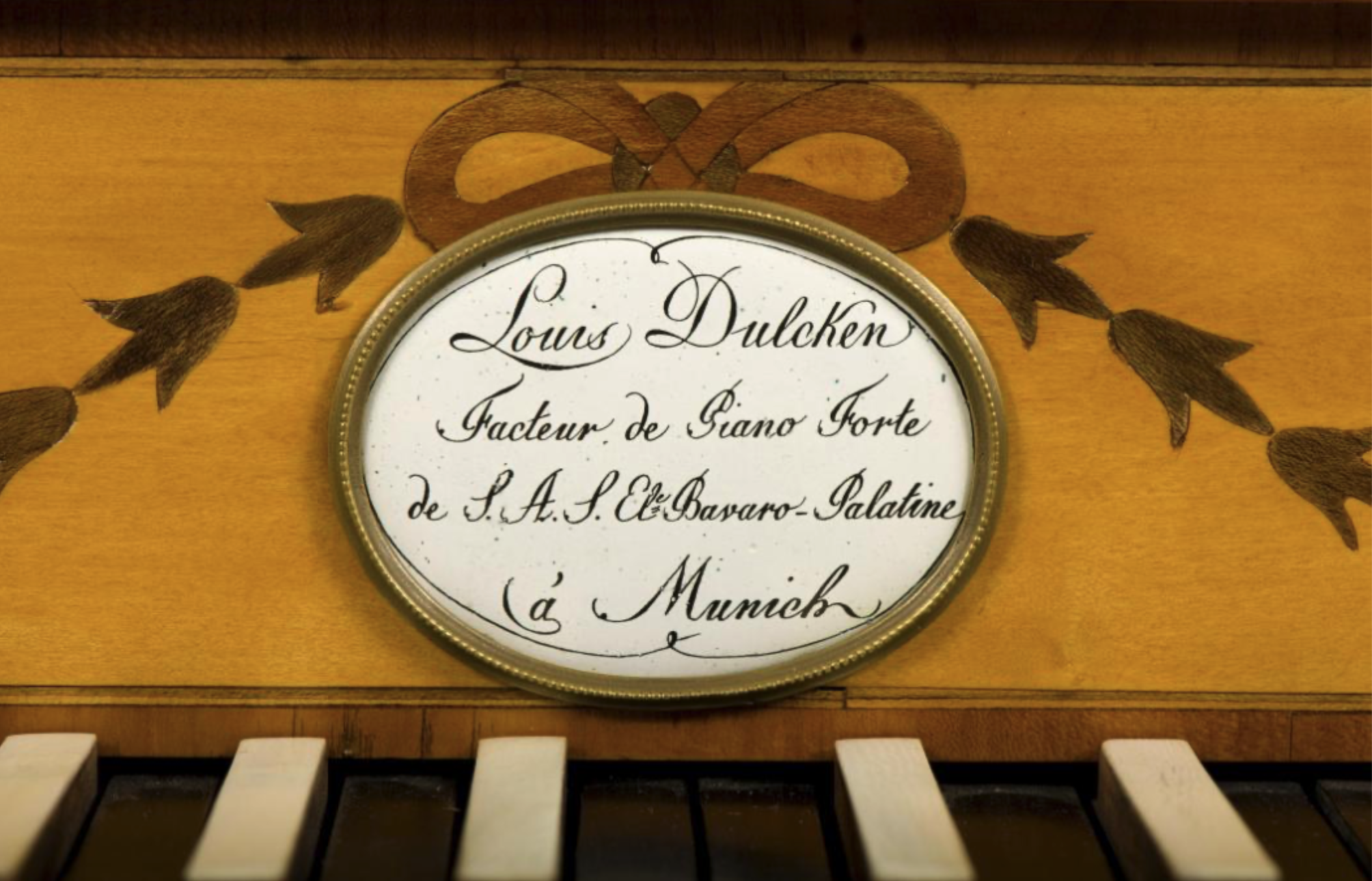
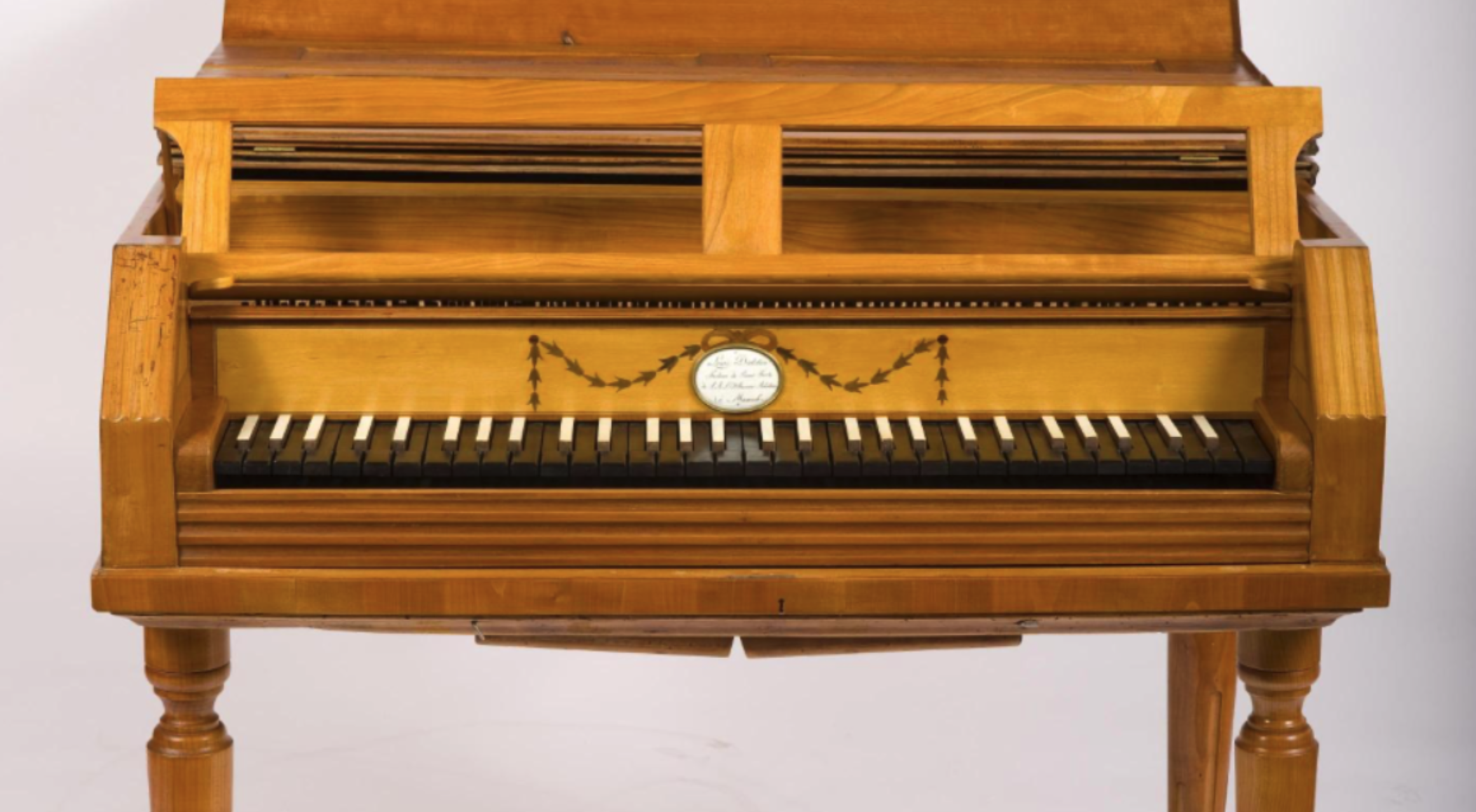
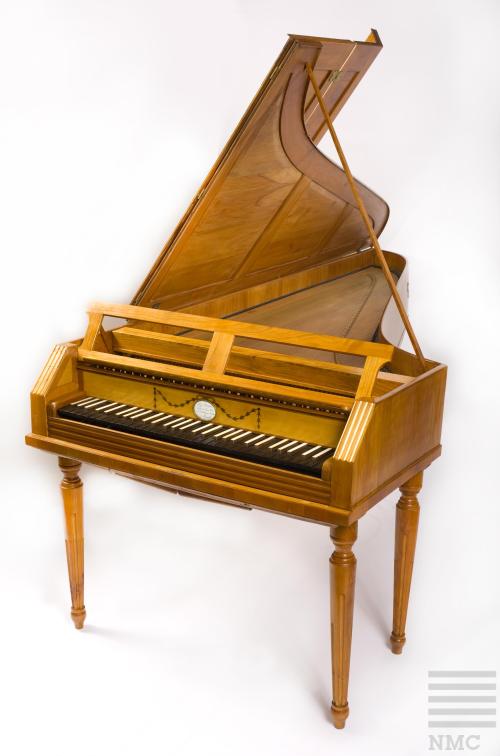
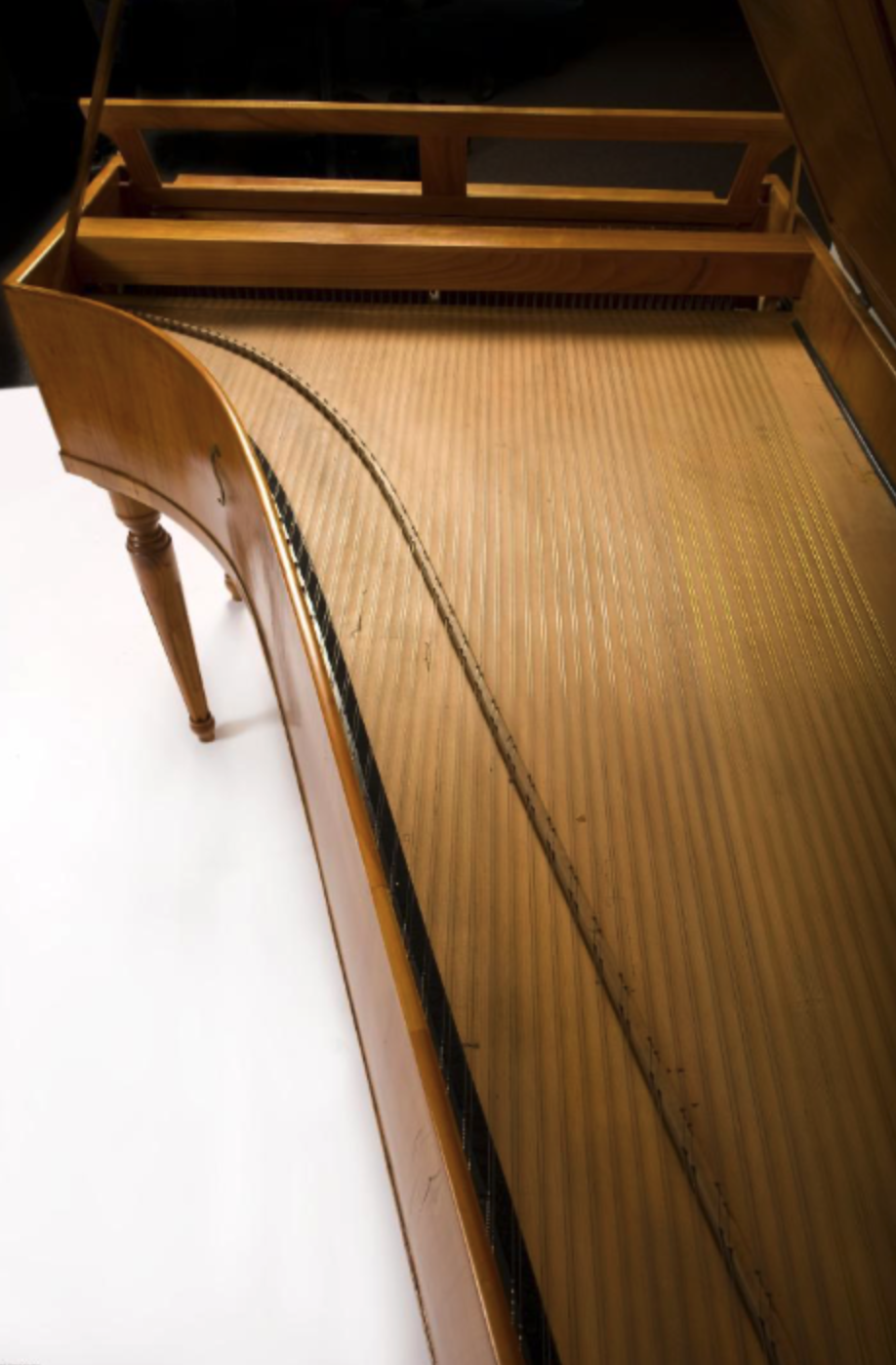
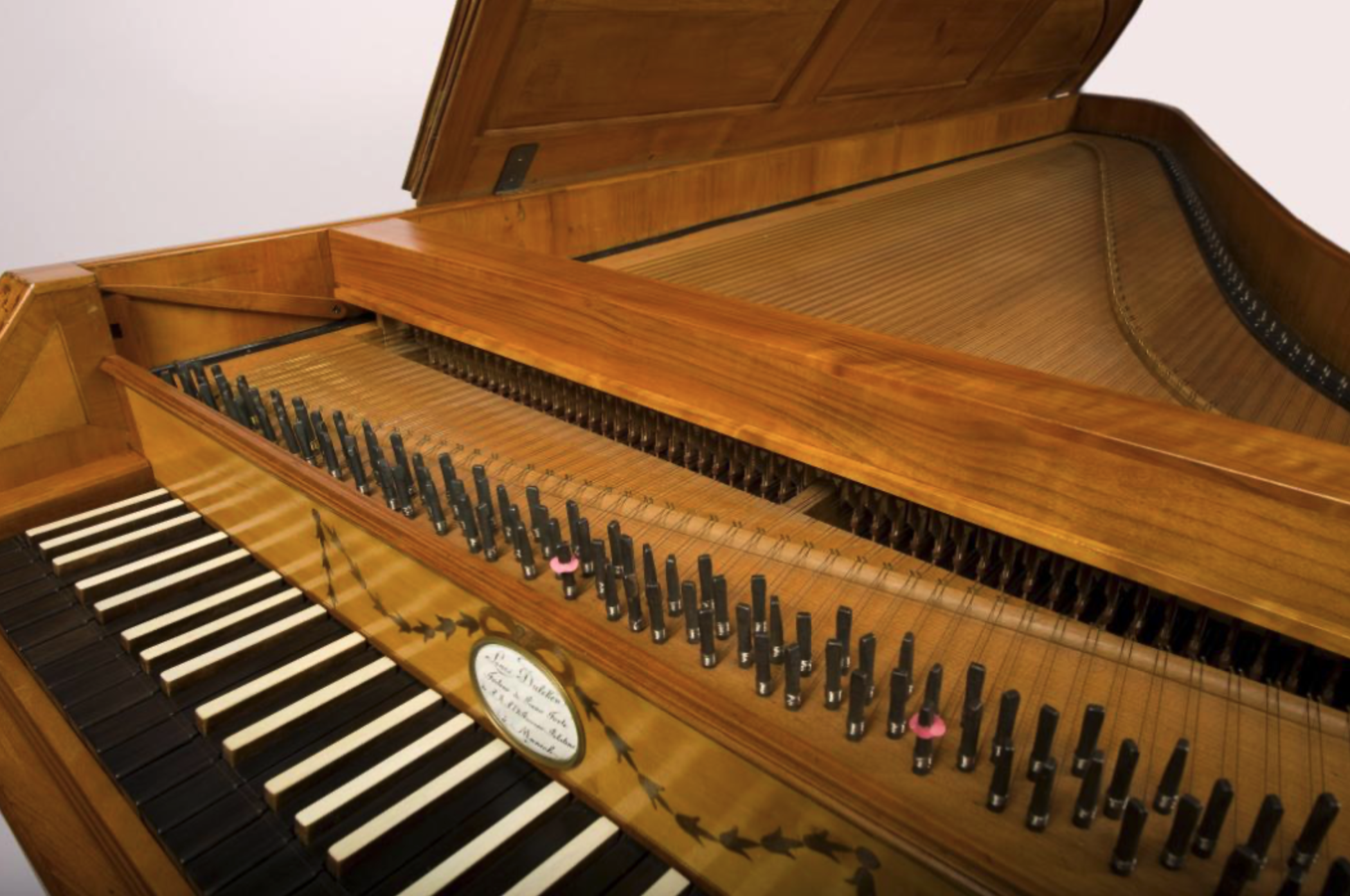
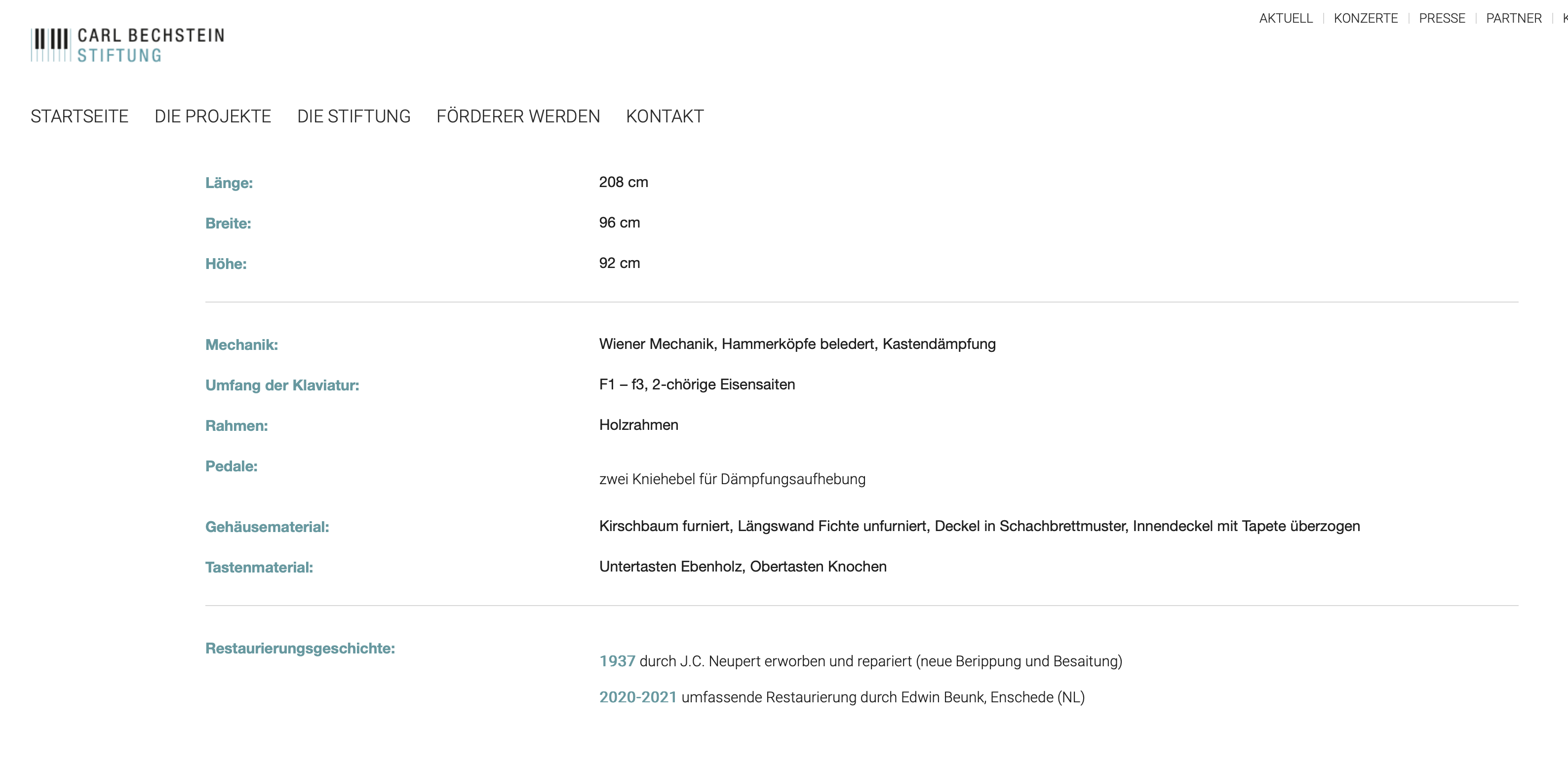
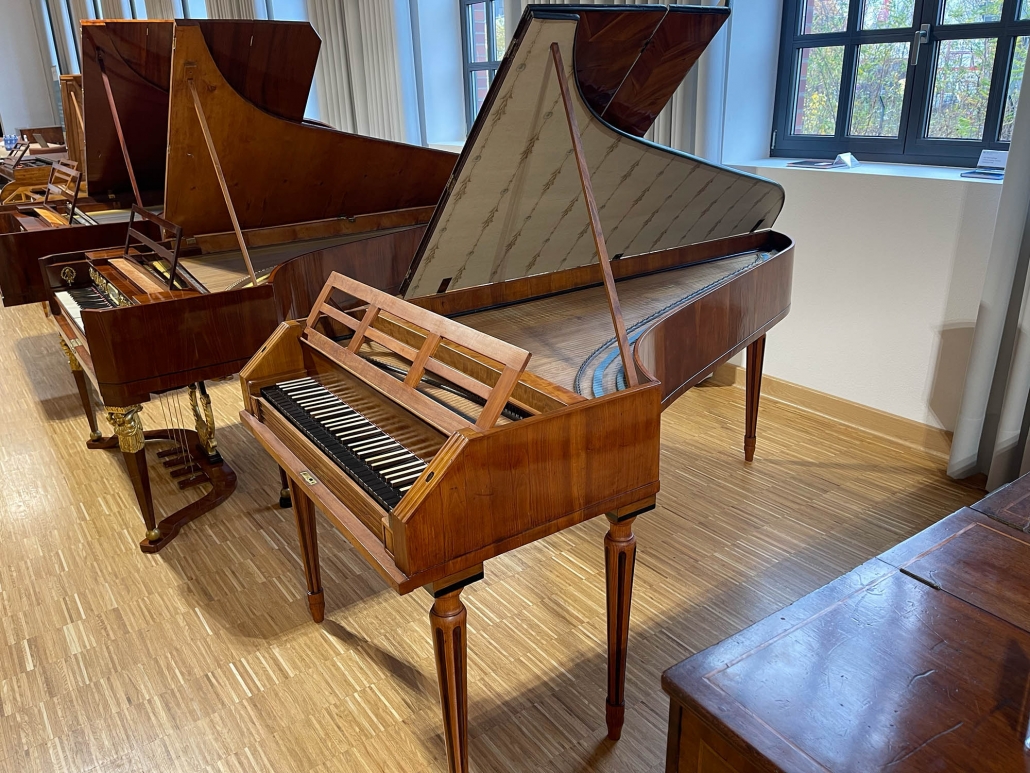
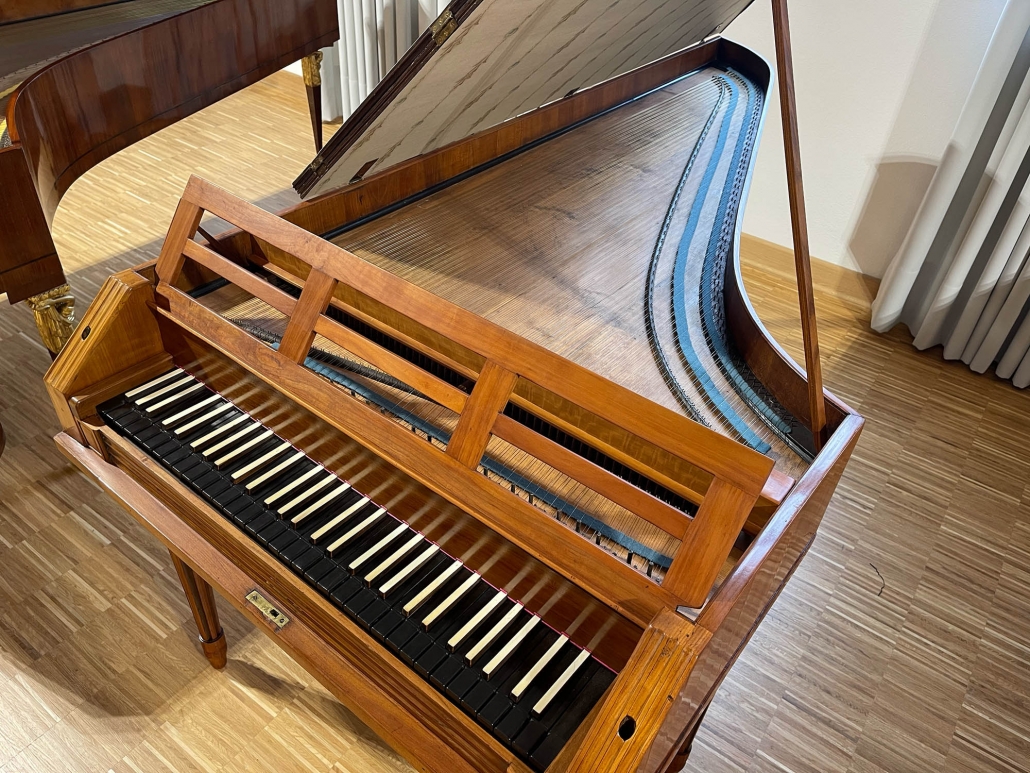
DESCRIPTION
This grand piano was made by Jean-Louis Dulcken in Munich, Germany around 1790. There is an inscription in ink on the soundboard, discovered during a restoration in 1985, that reads “Dulchen in München.” The piano also has a spurious Stein label on the soundboard. The piano has a compass of FF-g3, Viennese action, with back checks on rail, deerskin on wood core hammers, brass and iron strings, 2 strings for each note, 2 knee levers: both damper lifters, wood frame, straight-strung, and a cherry veneer case.
LOCATION
Currently not on view
OBJECT NAME
piano
DATE MADE
1785-1790
MAKER
Dulcken, Jean-Louis
PLACE MADE
Germany: Bavaria, Munich
PHYSICAL DESCRIPTION
deerskin on wood (hammers: material)
brass and iron (strings: material)
wood (frame: material)
cherry veneer (case: material)
National Museum of American History
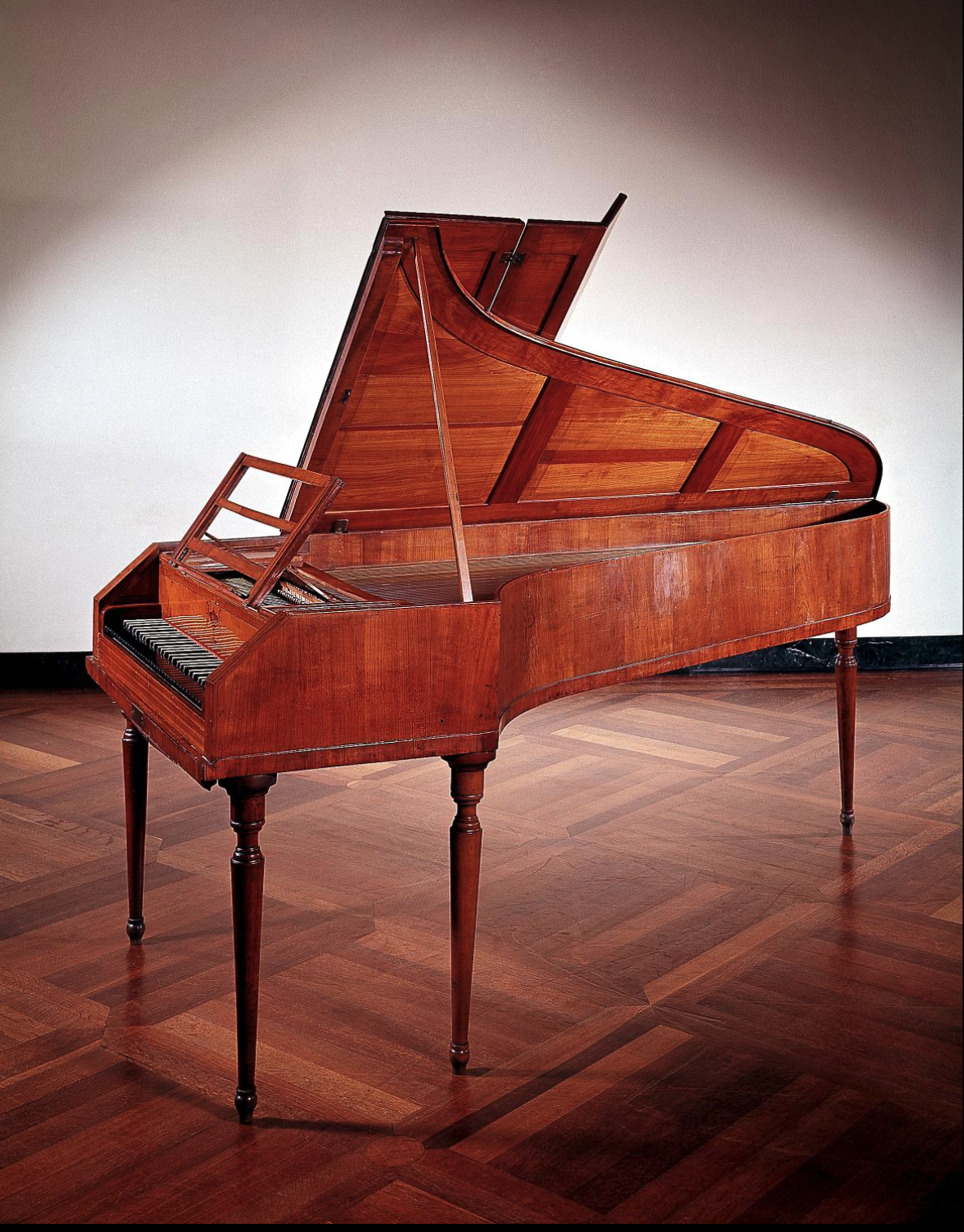
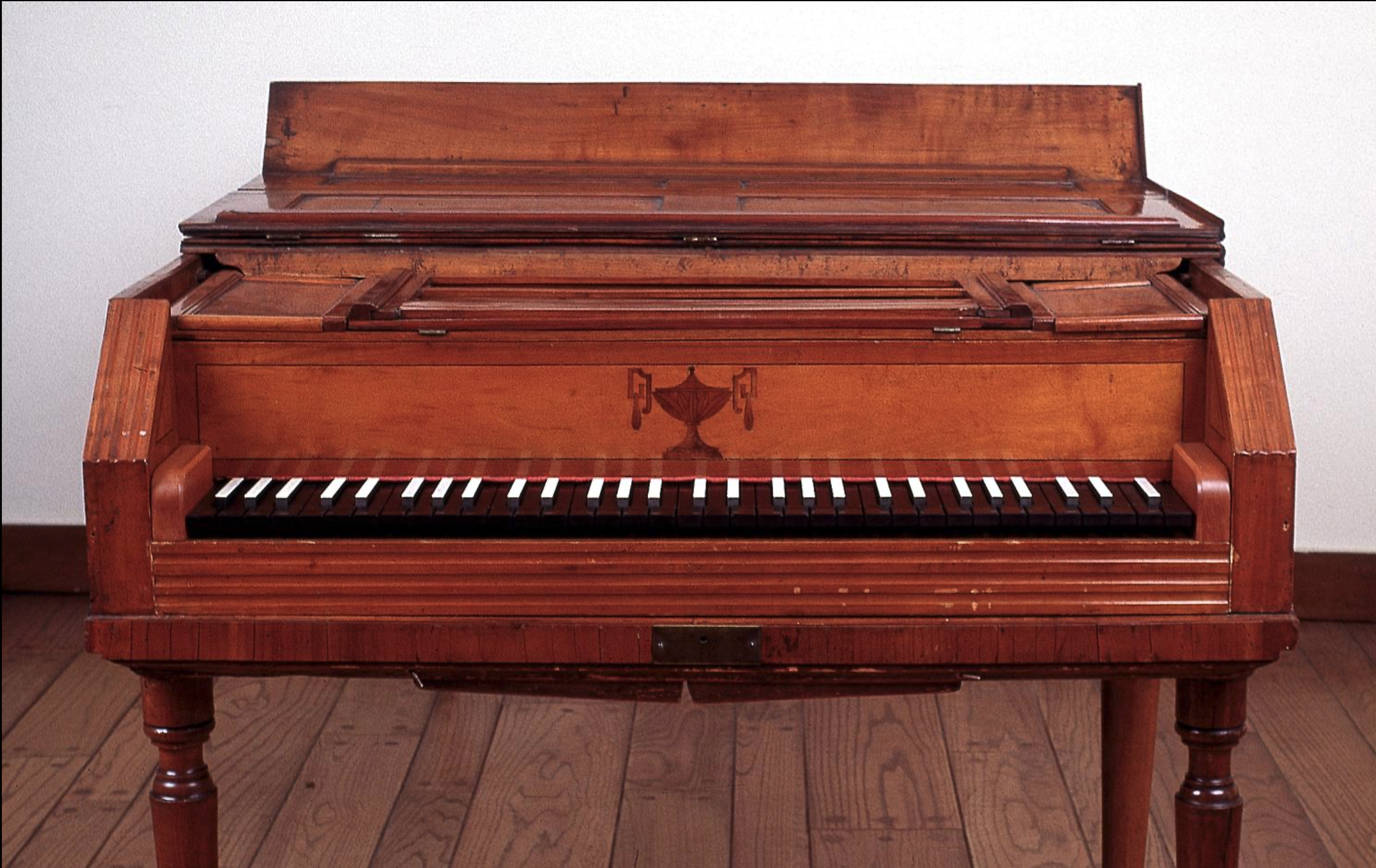

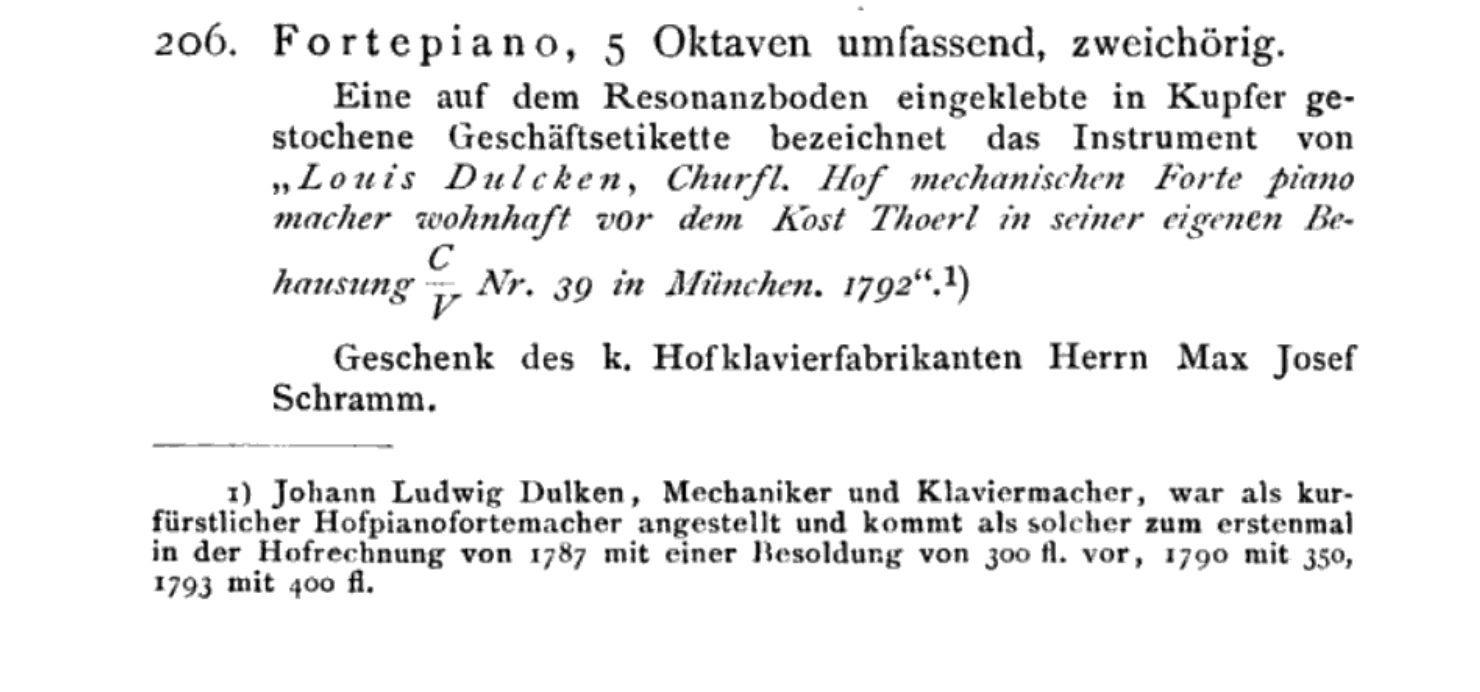
A ne pas confondre avec le précédent, Johannes Ludwig DULCKEN II, son fils, né en 1761 à Amsterdam. Celui-ci devint 'Mechanischer Hofklaviermacher' à Munich dès sa vingtième année, il deviendra d’ailleurs le Facteur de piano de Sa Majesté le roi de Bavière en 1808. La dernière mention de son existence date de 1835 et l’entreprise « DULCKEN et Fils » est attestée dès 1830. (1820 - "Bei der disjährigen, durch den polytechnischen Verein für: Baiern zu München veranstalteten Industrie- und Gewerbsausstellung, haben folgende Konkurrenten die von dem Verein gestiftete Medaille erhalten: [...] Der Instrumentenmacher Dülken zu München, für die Vorzüglichkeit seiner Fortepianos." Allgemeine Zeitung München, 06/01/1820, p. 23

De Stichting Musick’s Monument is het “Dulcken, drie generaties clavecimbel & fortepiano bouwers” project gestart.
Uit het genealogisch onderzoek van Hans Meijer naar zijn voorouders kwam Jan Dulken, geboren te Hasselt, te voorschijn.
GETROUWD TE AMSTERDAM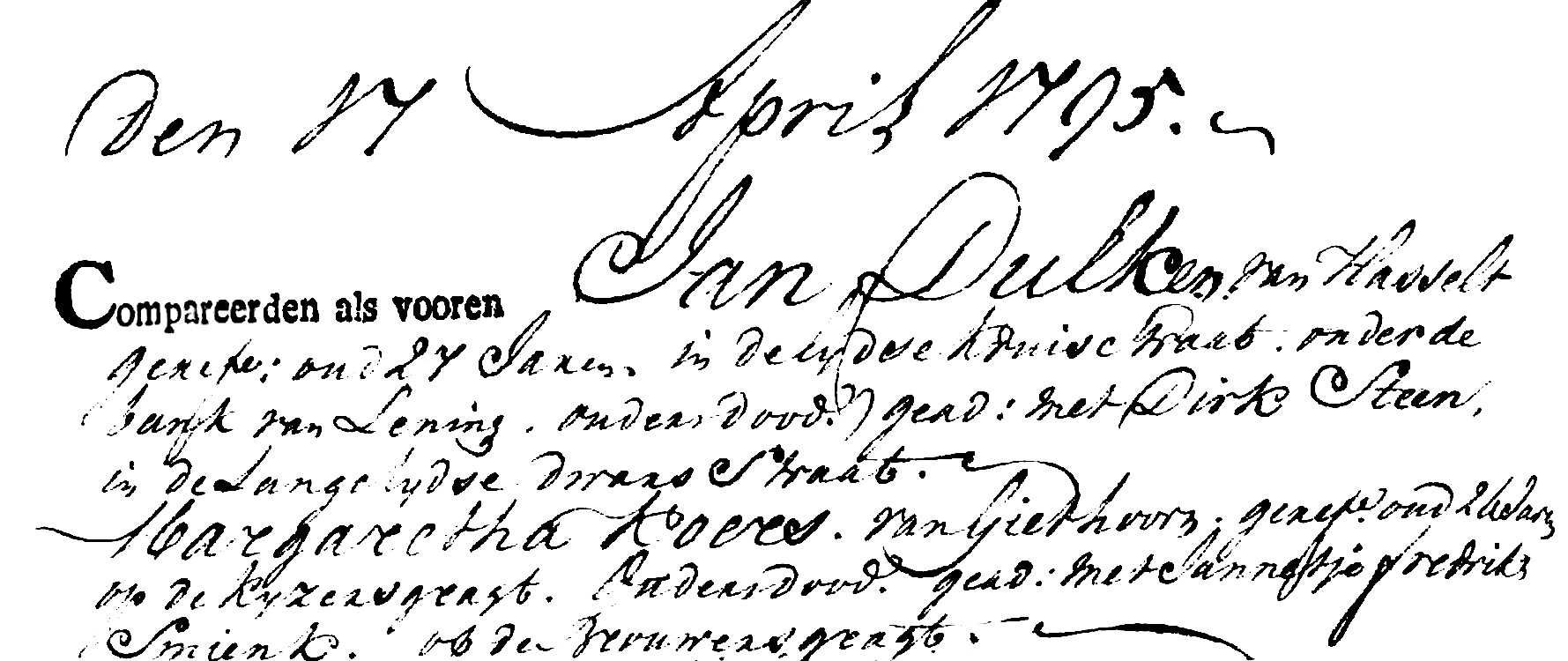
GEBOREN TE HASSELT OVERIJSSEL 26-12-1768
Johannes (Jan) Dulken zijn vader was Johan Lodewijk Dulcken en zijn grootvader Johan Daniël Dulcken. Johannes (Jan) Dulcken zijn broer Louis Dulcken.
Henk Poelarends heeft het onderzoek in het Hasselt’s archief gerealiseerd waaruit deze publicatie voortgekomen is.
The Musick's Monument Foundation has launched the ‘Dulcken, three generations of harpsichord & fortepiano builders’ project.
Die Stiftung Musick's Monument hat das Projekt „Dulcken, drei Generationen von Cembalo- und Hammerflügelbauern“ gestartet.
 Foundation Musick's Monument
Foundation Musick's Monument